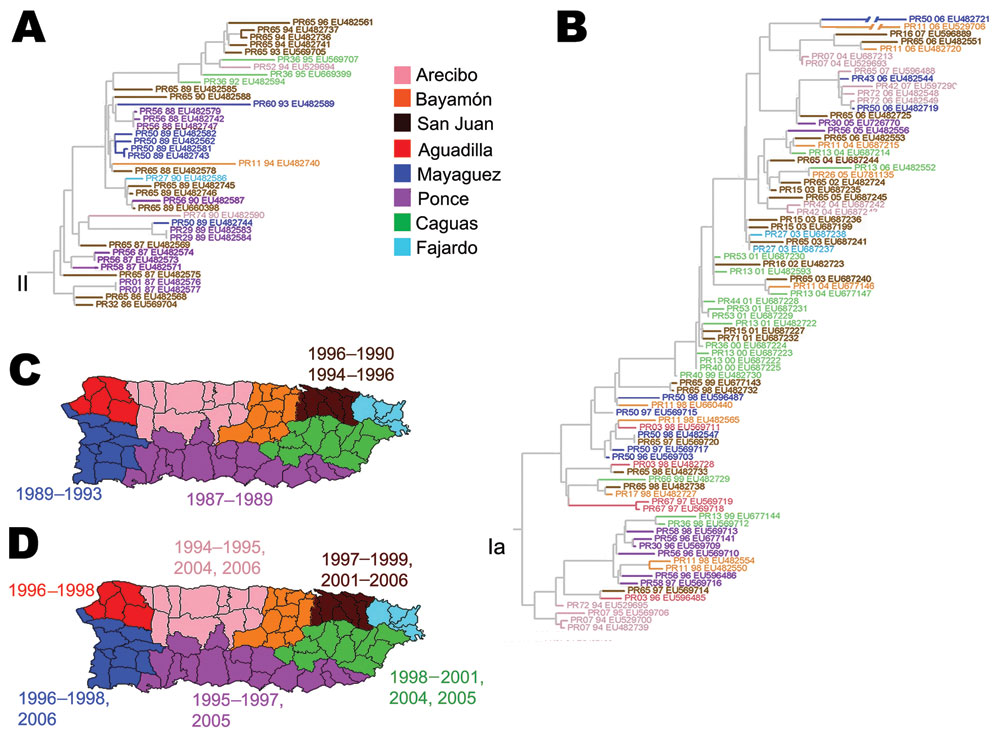Volume 17, Number 1—January 2011
Research
Endurance, Refuge, and Reemergence of Dengue Virus Type 2, Puerto Rico, 1986–2007
Figure 3

Figure 3. Geographic clustering of Puerto Rico dengue virus lineages. A) Maximum-likelihood phylogeny of clade II. All isolates indicate year of case presentation and GenBank accession numbers. B) Maximum-likelihood phylogeny of subclade IB shows isolates by year and GenBank accession numbers. Six regions had >5 isolates (San Juan, Caguas, Ponce, Mayaguez, Aguadilla, and Arecibo). C) Eight regions of Puerto Rico with colors corresponding to isolates in panel A and year for the 3 regions with more isolates of that clade: San Juan, Mayaguez, and Ponce. D) Eight regions of Puerto Rico, showing colors and years corresponding to isolates in panel B. Correlation between phylogeny and geographic location of isolation for the isolates in this study was estimated by using Bayesian Tip-association Significance testing. Association index 6.51 (95% confidence interval 6.03–7.22); parsimony score statistic 52.27 (95% confidence interval 51–54). Monophyletic clade size Bayesian Tip-association Significance estimates are shown for 6 regions of Puerto Rico with >5 isolates represented in at least 1 subclade and statistically representative geographic associations (p<0.05).
1These authors contributed equally to this article.